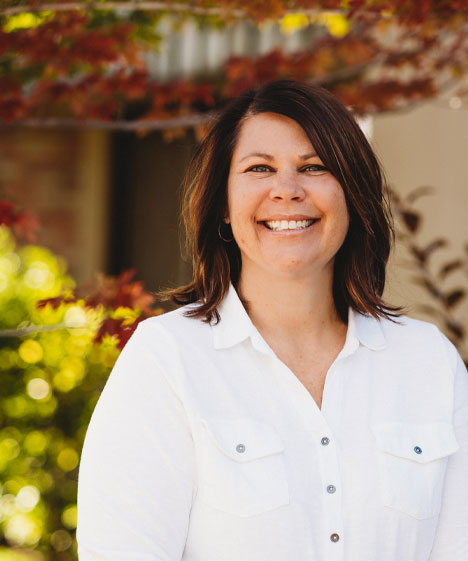If you live in or have visited Colorado, you’re probably aware that our state is known for its beautiful ash trees. Since our arborists are located in Colorado, we are all too familiar with ash tree care. Unfortunately, pests are an all-too-common problem for ash trees in Denver, but with the right know-how, care and prevention, your ash trees can live long, happy lives.
How To Identify Ash Trees
Before implementing proper ash tree care, it is important for you to be able to identify them. All ash tree species have similar identifiers, including the branches, leaves, bark, and seeds. Easily spot the ash trees in your neighborhood or property with this expert guide from the Michigan State University Extension or our selection of points below.
- Branch and Bud Arrangement: Rather than being staggered, branches and buds are directly across from each. When looking for opposite branching in trees, please consider that buds or limbs may die; hence not every single branch will have an opposite mate.
- Leaves: Composed of 5-11 leaflets, Ash leaves are compound patterned. Leaflet margins may be smooth or toothed. The only other common urban tree with opposite/ compounds leaves is the Boxelder, which typically has only 3-5 leaflets.
- Bark: The bark is gray and smooth on young trees. On mature trees, the bark is tight with a distinct pattern of diamond-shaped ridges.
- Seeds: When present on trees, seeds are dry, oar-shaped samaras. They usually occur in clusters and typically hang on the tree until late fall, early winter.
Pests That Commonly Prey on Ash Trees in Denver
There are a few common pests that tend to specifically target ash trees in the Denver area, including:
Emerald Ash Borer
The Emerald Ash Borer beetle, or EAB as it’s often referred to, usually steals the spotlight in articles and conversations regarding pests that threaten ash trees. Unfortunately, the EAB is far from the only ash pest in town! It is important to familiarize yourself with the plethora of pests that prey on these beautiful Colorado trees so you can take steps towards better ash tree care. That said, here are some identifiable features of the EAB:
- Shiny green metallic color, with red or purple abdomen under the wings.
- Long abdomen.
- Serrated antennae.
- Measuring approximately 1/2-inch long and 1/8-inch wide, EAB is often mistaken for the Six-Spotted Tiger Beetle and the Japanese Beetle.
Ash Sawfly
- Green, worm-like larvae chew the leaves of ash trees in spring.
- Weather is an important natural control, because late spring frosts and strong winds may kill large numbers of sawflies.
- In early stages of an infestation, larvae make small “pinhole” wounds in the interior of leaves.
- If necessary, ash sawflies can be controlled by garden insecticide, and many can also be dislodged by a strong jet of water from a hose.
Aphids
- Aphids are on almost all types of plants and a few species can cause plant injury.
- Some aphid species can curl the new leaves of some types of plant.
- Feeding aphids excrete honeydew, a sticky fluid that can attract other unwanted pests.
Lilac/Ash Borer
- Larvae of lilac/ash borer are cream colored with a dark head, while adults typically resemble a paper wasp.
- Larvae concentrate feeding in the lower trunk, particularly near the base of the tree.
- Borer tunneling activity produces gouging wounds under the bark.
Banded Ash Borer
- Adults are distinctive, with red and brown markings and rather long legs.
- They usually limit feeding to trees that are in serious decline or have recently died.
- Banded Ash Borers produce damage by tunneling patterns and oval-round exit holes.
Ash Bark Beetles
- Stout-bodied beetles, gray or brown in color.
- Ash bark beetles rarely attack healthy portions of the tree.
- Adult bark beetles cut chambers just under the bark.
- Common injury includes limb dieback and crown thinning.
Cytospora Canker
- Cytospora canker is a fungal disease that occurs on parts of stressed elm trees. The canker-causing fungi cause girdling of the plant, killing the plant above the canker.
Many of these pests can be tricky to identify on your own and are particularly adept at hiding. Therefore, it’s important to have a professional arborist inspect your trees on a regular basis and have them recommend a course of treatment. Prevention is always the best medicine.
Ash Tree Care and Treatment Options
Wondering how to care for an ash tree after reading about these pests? Fortunately, chemical treatments can effectively control them.
When your body has an infection, you take an antibiotic. In the same way, our treatment plans are a sort of antibiotic for your trees! Chemical treatments via trunk injection are typically performed between Mid-April and June, and recommended once every 2 years for ongoing protection.
Chemical treatments are just one piece of the puzzle for maintaining a health ash tree. Here are our recommendations on best seasonal practices for keeping ash trees healthy and strong:
- Watering: Proper watering is an overlooked but very important tree care practice. Some ash trees are prone to fungi related diseases if their soil becomes too saturated with water, and other damage can occur if there isn’t enough water. We can provide expert consultation on how much water you should be giving your ash trees, and how often.
- Fertilization: For many ash species, even the ones commonly found in Denver, the high alkaline soil can be a problem. The best way to neutralize this issue is with the right fertilizer application. Balancing the soil and getting your trees the nutrients they crave will keep them strong and healthy.
- Tree trimming: Annual pruning will help your ash trees continue to stand tall and proud. An abundance of dead, damaged, or slightly infected branches indicates that it is time to prune your ash trees. Regular pruning can ultimately save the whole tree!
- Mulch: Placing a 3-4 inch deep ring of mulch (as wide as you can tolerate!) around the base of your ash trees will help retain moisture, reduce vegetative competition, and break down over time to supply additional nutrients to your tree.
Ash Tree Care with Fielding
Unquestionably, watering and fertilizing are a key part of preventative ash tree care. Be sure to water early in the morning so the sun can dry the leaves and discourage fungal growth. Different ash tree varieties require different amounts of water and different types of fertilizer, so always consult with one of our expert arborists to find out exactly what your trees need.
Our team of arborists at Fielding Tree Care follow a tried-and-true tree care strategy:
Step 1: On-site Assessment
One of our certified arborists will perform a comprehensive on-site examination of your property. During the consultation, we identify each species of tree and shrub, looking for signs of infestation, damage, and disease. We carefully determine each tree’s condition, specific needs, and the time of year that will yield the best results for treatment.
Step 2: Implement Treatment Plan
We will coordinate the scheduling of your services based on your specific tree and shrubs’ needs, time of year, and availability. Our crew of licensed, insured arborists implement your maintenance plan to get your trees and shrubs looking their best.
Step 3: Ongoing Tree Maintenance
Ongoing tree maintenance includes continuing to protect your trees from pests and disease, annual fertilization, and complimentary spring consultations. When we visit your property in the spring, we check for any changes in health and safety, and adjust as needed based on our findings.
Pests can cause a lot of damage to ash trees if left untreated. By being proactive and taking preventative measures, you can help keep your trees healthy and looking their best.
Schedule your free consultation and fight ash tree pests today!







